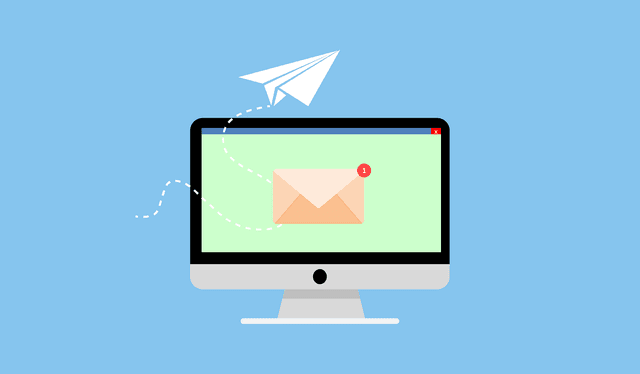The Importance of DMARC: Strengthening Email Security and Trust
In an increasingly digital world, where communication and transactions are frequently conducted online, email remains one of the most critical channels for personal and business interactions. However, with the widespread use of email comes a heightened risk of cyber threats, such as phishing, spoofing, and email fraud. To combat these risks and enhance email security, organizations and individuals are turning to DMARC (Domain-based Message Authentication, Reporting, and Conformance) as an essential tool. In this article, we'll explore the significance of DMARC in safeguarding email communication and building trust in the digital landscape.
Understanding DMARC:
DMARC is an email authentication protocol that helps prevent email fraud and abuse by allowing domain owners to specify how receiving mail servers should handle messages from their domains. It builds upon two other well-known email authentication methods: SPF (Sender Policy Framework) and DKIM (DomainKeys Identified Mail). SPF defines which IP addresses are authorized to send emails on behalf of a domain, while DKIM employs digital signatures to verify the authenticity and integrity of email messages. DMARC takes these methods further by providing a policy framework for aligning SPF and DKIM results with domain owners' preferences and instructing receiving servers on how to handle emails that fail authentication checks.
Percentage of Cybersecurity Companies with DMARC records
7443 Companies. Last Updated March 2024.
DMARC Quarantine vs Reject
A common question is what is better, DMARC Reject vs Quarantine. According to the official DMARC Specification, the DMARC rejection is an authoritative rejection of mail that fails DMARC checks whereas DMARC Quarantine leaves the handling open to a mail server's interpretation, which can mean that quarantined email could be placed in the spam folder, flagged, or further scrutizined, for example, quarantined in the admin portal until an admin processes and releases the email.
RFC 7489 - The Domain Owner wishes to have email that fails the DMARC mechanism check be treated by Mail Receivers as suspicious. Depending on the capabilities of the Mail Receiver, this can mean "place into spam folder", "scrutinize with additional intensity", and/or "flag as suspicious".
RFC 7489 - The Domain Owner wishes for Mail Receivers to reject email that fails the DMARC mechanism check.
Of course, the major issue with delivering emails to spam folders, is that users often have a constrained understanding of what defines a phishing email, so the user sees the perfect email address in the folder, but with no ability or will to analyze the email headers, thus releasing it. With many organizations keeping junk email for up to 30 days, or even indefinitely, it makes sense to avoid p=quarantine, and lock down your domain with p=reject. It is for this reason that Stellastra scores companies higher who have p=reject DMARC policies. Companies employing a DMARC Rejection policy excude confidence in their email security.
The Importance of DMARC:
-
Combatting Phishing and Spoofing: Phishing attacks often involve malicious actors sending emails that appear to come from reputable sources, aiming to deceive recipients into revealing sensitive information or performing harmful actions. By enforcing DMARC policies that reject or quarantine unauthorized emails, organizations can drastically reduce the success rate of such attacks. DMARC helps ensure that only legitimate senders can use a domain, thereby minimizing the risk of impersonation and spoofing.
-
Enhancing Email Deliverability: Incorrectly configured email authentication mechanisms can lead to genuine emails being flagged as spam or blocked altogether. DMARC aids in improving email deliverability by reducing false positives in spam filters. When receiving servers recognize that an email complies with DMARC policies, they are more likely to deliver it to the recipient's inbox.
-
Building Trust: In a world where phishing scams and fraudulent emails are common, organizations must demonstrate their commitment to email security. Implementing DMARC not only protects customers, partners, and employees from email-based attacks but also shows that the organization values their privacy and security. This builds trust and enhances the organization's reputation.
-
Monitoring and Reporting: DMARC provides detailed reports on email authentication results, allowing domain owners to gain insights into how their domains are being used and abused. These reports help identify unauthorized senders, misconfigurations, and potential security vulnerabilities, enabling organizations to take swift corrective actions.
-
Regulatory Compliance: Various industries are subject to regulations and standards that mandate the protection of sensitive information. DMARC can play a pivotal role in meeting these requirements by preventing unauthorized access to confidential data through email-based attacks.
Implementing DMARC:
While DMARC offers substantial benefits, its successful implementation requires careful planning and execution:
RFC 7489 - DMARC is a mechanism for policy distribution that enables increasingly strict handling of messages that fail authentication checks, ranging from no action, through altered delivery, up to message rejection.
-
Assessment: Begin by assessing your current email authentication mechanisms (SPF and DKIM). Ensure that these are properly configured and aligned with your domain's email sending infrastructure.
-
Gradual Rollout: DMARC implementation can be done in stages, starting with a "monitor" policy that allows you to collect data without impacting email delivery. Once you're confident in the results, gradually move to a "reject" policy.
-
Policy Alignment: Properly align SPF and DKIM records with your domain's DMARC policy to ensure consistent authentication results across different email providers.
-
Monitoring and Analysis: Regularly review DMARC reports to identify any discrepancies, unauthorized senders, or potential issues. Adjust your policy and configurations accordingly.
-
Education and Awareness: Educate your employees, customers, and partners about the implementation of DMARC and its significance in preventing email-based attacks. This awareness can help them identify suspicious emails and report them promptly.
The importance of DMARC cannot be overstated in today's digital landscape. As cyber threats continue to evolve, organizations and individuals must take proactive measures to safeguard their email communication. DMARC provides a robust solution that not only reduces the risk of phishing, spoofing, and email fraud but also enhances trust, strengthens regulatory compliance, and improves email deliverability. By implementing DMARC effectively, we create a safer and more secure environment for digital communication and collaboration.



